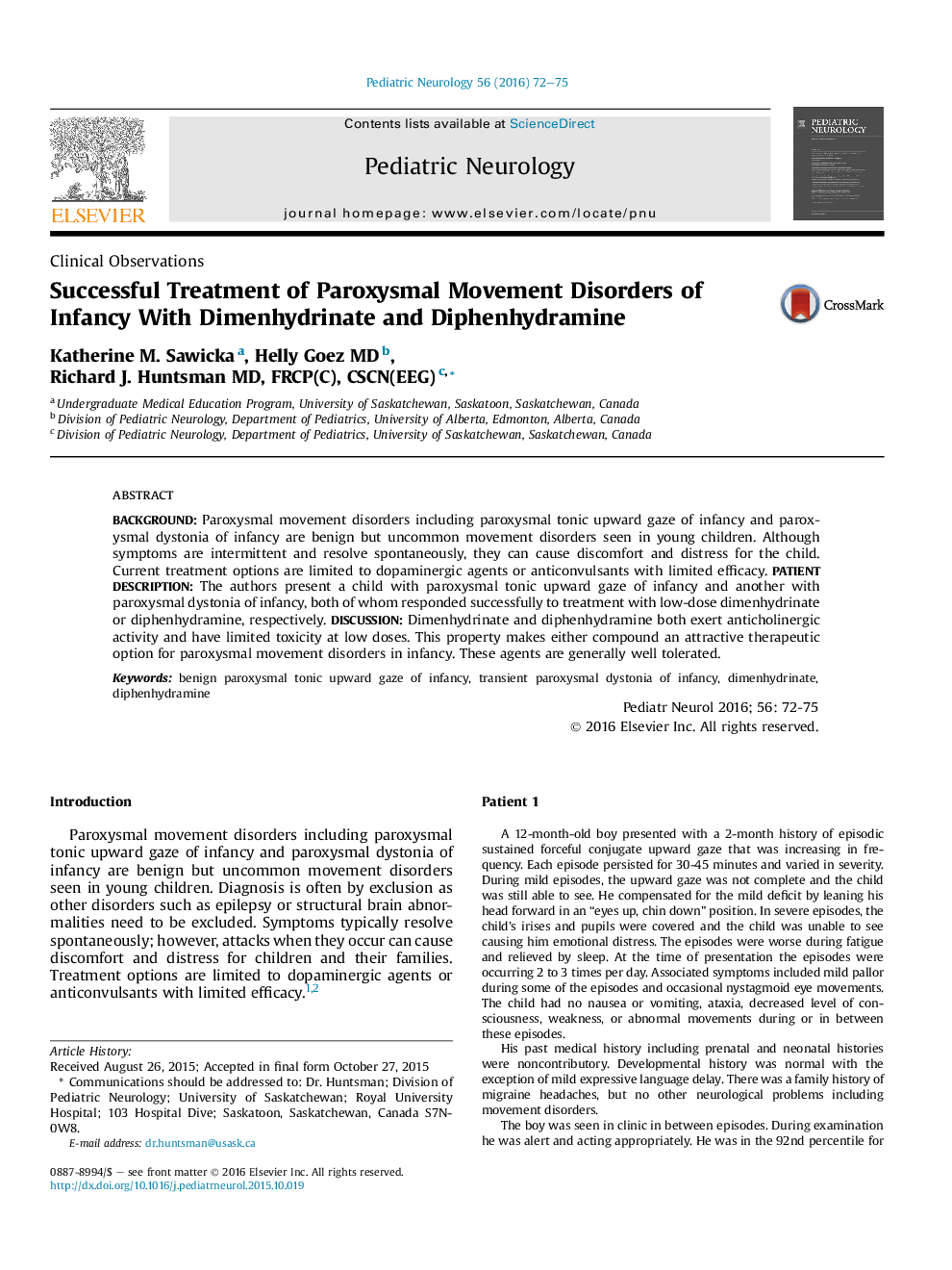| Article ID | Journal | Published Year | Pages | File Type |
|---|---|---|---|---|
| 3084468 | Pediatric Neurology | 2016 | 4 Pages |
BackgroundParoxysmal movement disorders including paroxysmal tonic upward gaze of infancy and paroxysmal dystonia of infancy are benign but uncommon movement disorders seen in young children. Although symptoms are intermittent and resolve spontaneously, they can cause discomfort and distress for the child. Current treatment options are limited to dopaminergic agents or anticonvulsants with limited efficacy.Patient DescriptionThe authors present a child with paroxysmal tonic upward gaze of infancy and another with paroxysmal dystonia of infancy, both of whom responded successfully to treatment with low-dose dimenhydrinate or diphenhydramine, respectively.DiscussionDimenhydrinate and diphenhydramine both exert anticholinergic activity and have limited toxicity at low doses. This property makes either compound an attractive therapeutic option for paroxysmal movement disorders in infancy. These agents are generally well tolerated.
